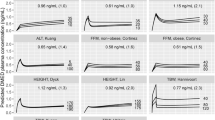Abstract
Objective
Drug-induced sleep endoscopy (DISE) allows for the evaluation of dynamic airway collapse in patients with obstructive sleep apnea. However, a standardized sedation regimen for DISE is not yet available. This study aimed to investigate the safety profiles and efficacies of dexmedetomidine combined with butorphanol for DISE.
Methods
Sixty patients with obstructive sleep apnea scheduled to undergo DISE were randomly divided into Group D and Group DB. All recipients were initially given intravenous butorphanol (1 mg) (Group DB) or saline (Group D). Subsequently, both groups were sedated using a loading dose of 1.0 µg/kg/h of dexmedetomidine. Hemodynamic and respiratory parameters, the time to attain sufficient sedation, wakeup time, and adverse events during DISE were recorded.
Results
Compared with Group D, the time until sufficient sedation and wakeup time in Group DB were significantly reduced. A higher performer satisfaction level was achieved in Group DB. Patients in Group DB showed a higher incidence of bradycardia compared with Group D. However, the bradycardia resolved spontaneously in both groups without any treatment. There was no instance of cough, hypotension, arrhythmia, nausea or vomiting in either group.
Conclusion
Compared to dexmedetomidine alone, a small dose of butorphanol infusion (1 mg) as an adjunct treatment to dexmedetomidine during DISE can reduce the dosage of dexmedetomidine, shorten the time until sufficient sedation and enhance the performer satisfaction level. This synergistic combination could be a promising sedation regimen for DISE in terms of procedural convenience and patient safety.
Similar content being viewed by others
References
Gottlieb DJ, Punjabi NM. Diagnosis and Management of Obstructive Sleep Apnea: A Review. JAMA, 2020, 323(14):1389–1400
Veasey SC, Rosen IM. Obstructive Sleep Apnea in Adults. N Engl J Med, 2019,380(15):1442–1449
Carrasco-Llatas M, Matarredona-Quiles S, De Vito A, et al. Drug-Induced Sleep Endoscopy: Technique, Indications, Tips and Pitfalls. Healthcare (Basel), 2019, 7(3):93
Certal VF, Pratas R, Guimarães L, et al. Awake examination versus DISE for surgical decision making in patients with OSA: A systematic review. Laryngoscope, 2016,126(3):768–774
De Vito A, Carrasco Llatas M, Ravesloot MJ, et al. European position paper on drug-induced sleep endoscopy: 2017 Update. Clin Otolaryngol, 2018,43(6): 1541–1552
Dere K, Sucullu I, Budak ET, et al. A comparison of dexmedetomidine versus midazolam for sedation, pain and hemodynamic control, during colonoscopy under conscious sedation. Eur J Anaesthesiol, 2010,27(7):648–652
Chang ET, Certal V, Song SA, et al. Dexmedetomidine versus propofol during drug-induced sleep endoscopy and sedation: a systematic review. Sleep Breath, 2017, 21(3):727–735
Zhao LL, Liu H, Zhang YY, et al. A Comparative Study on Efficacy and Safety of Propofol versus Dexmedetomidine in Sleep Apnea Patients undergoing Drug-Induced Sleep Endoscopy: A CONSORT-Prospective, Randomized, Controlled Clinical Trial. Biomed Res Int, 2018,2018:8696510
Jaw SP, Hoskins B, Ho IK. Opioid antagonists and butorphanol dependence. Pharmacol Biochem Behav, 1993,44(3):497–500
Keating GM. Dexmedetomidine: A Review of Its Use for Sedation in the Intensive Care Setting. Drugs, 2015, 75(10):1119–1130
WHO Expert Committee on Drug Dependence. World Health Organization technical report series, 2006(942):i, 1–21, 23–24 passim
Dawn AG, Yosipovitch G. Butorphanol for treatment of intractable pruritus. J Am Acad Dermatol, 2006,54(3): 527–531
Rosow CE. Butorphanol in perspective. Acute Care, 1988,12(Suppl 1):2–7
Jin S, Liang DD, Chen C, et al. Dexmedetomidine prevent postoperative nausea and vomiting on patients during general anesthesia: A PRISMA-compliant meta analysis of randomized controlled trials. Medicine (Baltimore), 2017,96(1):e5770
Cho JS, Soh S, Kim EJ, et al. Comparison of three sedation regimens for drug-induced sleep endoscopy. Sleep Breath, 2015,19(2):711–717
Offermeier J, van Rooyen JM. Opioid drugs and their receptors. A summary of the present state of knowledge. S Afr Med J, 1984,66(8):299–305
Ebert TJ, Hall JE, Barney JA, et al. The effects of increasing plasma concentrations of dexmedetomidine in humans. Anesthesiology, 2000,93(2):382–394
Bloor BC, Ward DS, Belleville JP, et al. Effects of intravenous dexmedetomidine in humans. II. Hemodynamic changes. Anesthesiology, 1992,77(6): 1134–1142
Author information
Authors and Affiliations
Corresponding author
Additional information
Conflict of Interest Statement
The authors declare that they have no conflict of interests.
This work was supported by the National Natural Science Foundation of China (No. 81470677) and the Natural Science Foundation of Hubei Province (No. 2020CFB562).
Rights and permissions
About this article
Cite this article
Zhang, Xh., Liu, S. & Liao, Wm. Combination of Dexmedetomidine and Butorphanol Optimized Sedation in Drug-Induced Sleep Endoscopy: A Randomized, Double-Blind Trial. CURR MED SCI 41, 1247–1251 (2021). https://doi.org/10.1007/s11596-021-2492-1
Received:
Accepted:
Published:
Issue Date:
DOI: https://doi.org/10.1007/s11596-021-2492-1




